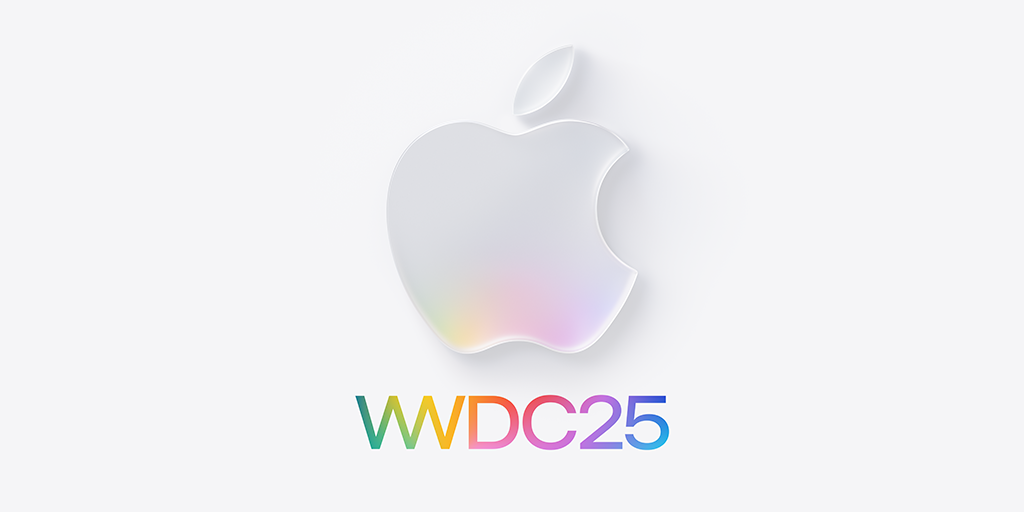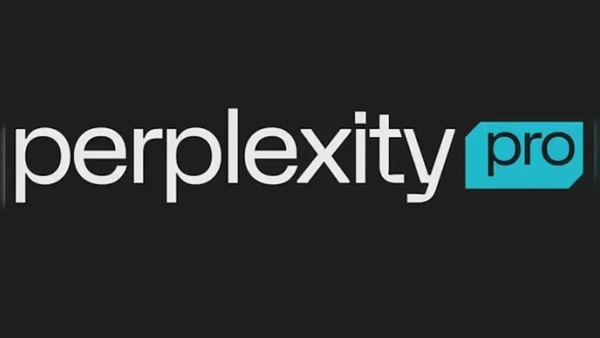Apple's WWDC 2025 Recap: A New Era of Apple Intelligence and Universal Design
WWDC 2025 was a total overhaul. Apple revealed a new 'Liquid Glass' design, game-changing iPadOS 26 multitasking, and powerful AI features like Call Screening for iOS 26. This is the future of Apple's ecosystem.

Apple’s Worldwide Developer Conference (WWDC) 2025, held on June 9th, just hours ago, marked a significant moment, unveiling major updates across the company’s software platforms: iOS, watchOS, tvOS, macOS, visionOS, and iPadOS.
This annual event is a crucial time for Apple to celebrate and empower its global developer community by providing the newest tools and technologies.
Presented online and for free, WWDC allows millions of developers worldwide to access over 100 sessions and labs led by Apple engineers, offering valuable technical and design guidance. The event highlighted two foundational pillars: an expansion of Apple Intelligence and the introduction of a stunning new universal design language across all platforms.
Beyond the software announcements, the event also briefly touched upon Apple’s entertainment endeavors, including the upcoming Apple Original film “F1” premiering on June 27th. It was also noted that Apple TV+ has been ranked number one in quality programming for four straight years.
Foundation 1: Expanding Apple Intelligence
Building on the initial steps taken last year, Apple Intelligence is being expanded, featuring more capable and efficient generative models and integration across the ecosystem.
Last year’s additions included Writing Tools, Genmoji, Image Playground, Clean Up, and Visual Intelligence for exploring surroundings. Users could also find photos/videos by description, create memory movies, summarize communications, and use Smart Reply. A key focus remains privacy in AI with Private Cloud Compute, extending iPhone privacy into the cloud so data is inaccessible, even by Apple. Work is also continuing to make Siri more natural and helpful.
This year’s advancements extend Apple Intelligence to more languages. A significant announcement for developers is the new Foundation Models framework, which opens up access for any app to tap directly into the on-device large language model at the core of Apple Intelligence. This provides developers with powerful, fast, privacy-built intelligence that’s available even offline, aiming to ignite a new wave of intelligent app experiences. Examples provided included a Kahoot! app creating a personalized quiz from notes offline without cloud API costs, and AllTrails suggesting hike options based on descriptions.
Foundation 2: A Beautiful New Universal Design
Described as the “biggest design update ever,” this new universal design aims to bring joy and delight to every user experience, making it more personal while focusing on content, yet still feeling instantly familiar. Inspired by the physicality and richness of visionOS, the goal was to make purely digital experiences feel natural and alive.
This is achieved through an entirely new expressive material called Liquid Glass. This material possesses the optical qualities of glass but with Apple’s unique fluidity, transforming based on content or context and bringing clarity to navigation and controls. It refracts light and reacts dynamically to movement with specular highlights, adding vitality to the experience. Elements previously designed for rectangular displays have been redesigned to fit concentrically with the hardware’s rounded corners, enhancing harmony between software and hardware and freeing up space for content.
Liquid Glass is translucent, behaving like real-world glass, adapting its color based on content and intelligently switching between light and dark environments. It serves as a distinct functional layer that dynamically morphs to show more options or as users move between views. This dynamic nature is applied to alerts, context menus, and tab bars, making the overall experience, including Lock Screen, notifications, and Control Center, more intuitive. App icons are crafted with multiple layers of Liquid Glass and come alive in various modes and tints, including an all-new clear look. This new design extends to the Dock and widgets, offering new ways to personalize the experience.
This new design sets the stage for the next era of Apple products and interactions. To bring greater consistency across platforms with this unified design, Apple is unifying version numbers. Future releases for Fall 2025, powering devices through 2026, will be version 26.
Platform-Specific Updates and Significant Features
The event then delved into the specifics for each platform, showcasing how Apple Intelligence and the new design are integrated, alongside numerous other updates.
iOS 26
iOS 26 brings a stunning new design, Apple Intelligence capabilities integrated throughout the system, and improvements to everyday apps.
- Lock Screen & Home Screen: Features time and controls made of Liquid Glass, redesigned Liquid Glass app icons that feel fresh and adapt to light/dark modes or new styles. Dynamic wallpapers allow the time to fluidly adapt to photo subjects and new information like messages, keeping the best part of the photo in view. Advanced computer vision creates spatial scenes from 2D photos, generating a delightful 3D effect.
- Now Playing Experience: Gorgeous new way for artists to show off album artwork, interacting beautifully with glass playback controls.
- Camera App: New, more intuitive design with simplified photo/video modes. Features like Cinematic, Portrait, aspect ratio, timers, and format changes (e.g., 4K) are easily accessible with swipes and taps.
- Photos App: Returns to using tabs with separate sections for Library and Collections (Favorites, albums, search). The stunning 3D effect from the Lock Screen is available for any photo.
- Safari: More immersive experience with web pages flowing edge-to-edge. The tab bar is redesigned to float and dynamically shrinks/expands.
- FaceTime: Reimagined landing page features personalized Contact Posters and video message previews. Controls float and recede dynamically.
- CarPlay: New design extends to the car for a consistent, expressive experience. Updates include icons that look great in light/dark mode, compact call design, Tapbacks, and pinned conversations in Messages. Widgets and Live Activities are now available, designed for quick glances while driving. CarPlay Ultra offers the ultimate experience with unified design across driver’s screens and vehicle controls integration.
- Phone App: New unified layout for Favorites, Recents, and Voicemails. Apple Intelligence provides voicemail summaries. Call Screening automatically answers calls from unknown numbers silently in the background, providing caller information before the phone rings. Hold Assist allows the phone to wait on hold for you and rings you when an agent is available.
- Messages: Add Backgrounds to conversations. Create Polls in group chats, with Apple Intelligence suggesting polls based on conversation context. Apple Cash integration in group chats for easy payments. Typing indicators for group chats. On-device spam detection and the ability to screen new senders (unknown senders appear in a dedicated area, silenced until accepted).
- Communication & Apple Intelligence: More ways to create emoji, including mixing two emoji or combining emoji with descriptions. Image Playground enhancements like changing expressions and hairstyles. Image Playground integrates with ChatGPT for new styles (e.g., oil painting) and custom style creation from descriptions, with user control and permission required for sharing with ChatGPT.
- Live Translation: Integrated into Messages, FaceTime, and Phone calls, powered by on-device Apple-built models for privacy. Translates text in Messages as you type/receive, provides live captions while hearing an original voice in FaceTime, and offers spoken translation in Phone calls (even with non-iPhones).
- Apple Music: Adds Lyrics Translation and Lyrics Pronunciation. AutoMix uses intelligence to seamlessly mix songs like a DJ. Music pins allow pinning favorite artists, albums, or playlists to the top of the library.
- Maps: Learns and offers preferred routes for daily commutes, adapting to changes. The Maps widget shows commute time, and notifications alert users to significant delays with alternate routes. Visited Places feature helps remember, view, and share past locations like restaurants or shops, protected with end-to-end encryption.
- Wallet: Continued expansion of Car keys support. Driver’s licenses in Wallet available in more states/PR. Digital ID with U.S. passport can be used for domestic travel at supported TSA checkpoints, in apps, and in person for verification. Refreshed boarding passes include indoor mapping, Find My bag tracking, and shareable live flight status. Apple Pay allows redeeming points or using installments in person. Wallet can now track all orders (not just Apple Pay) by identifying and summarizing details from emails using Apple Intelligence.
- Games: Introduces the new Games app as a central destination for all games and playing with friends. Features Home, Apple Arcade, and Library tabs. Includes a Play Together tab to see friends’ activity and invite them. Challenges allow competing with friends in score-based showdowns.
- Visual Intelligence: Extends to the iPhone screen, allowing users to search and take action across any app using content on the screen. Accessed via the screenshot gesture. Features include image search, highlighting and searching for items (e.g., lamps on Etsy), and intelligent suggestions like adding an event to the calendar by extracting details. An Ask button integrates ChatGPT to ask questions about screen content. Visual search is also possible using the iPhone camera to point at items and search specific apps.
watchOS 26
watchOS 26 brings enhancements and the gorgeous new design with Liquid Glass to elements like the Smart Stack, Photos face, Control Center, and in-app navigation. Intelligence is used to gain a deeper understanding of the user and proactively provide needed information.
- Workout: Introduces Workout Buddy, an exciting new fitness feature powered by Apple Intelligence. It analyzes fitness history (paces, miles, rings, training load) in real-time to provide personalized encouragement using a dynamic generative voice built from Fitness Plus trainer data. Includes a new workout layout, Custom Workout, Race Route, and new media features like Apple Music playlist suggestions based on workout type and listening history.
- Smart Stack: Improves prediction algorithm by fusing on-device data (points of interest, location, routines) to proactively suggest useful widgets, like a workout widget at the gym or Backtrack in remote locations.
- Notifications: Automatically adjusts incoming call and notification volume based on ambient noise. A new wrist flick gesture allows dismissing notifications, muting calls, silencing timers/alarms, or closing the Smart Stack.
- Messages: Gains many iOS features, including Apple Intelligence capabilities, Live Translation, conversation backgrounds, and quick actions based on message context (e.g., sharing location).
- Notes App: Now available on Apple Watch for saving quick notes or viewing existing ones.
tvOS 26
tvOS 26 makes Apple TV more enjoyable, starting with the new design and Liquid Glass, which looks incredible on the big screen with vibrant icons and specular highlights.
- Apple TV App: New design enhances the experience with unobtrusive playback controls that refract content and a bold new look with beautiful cinematic poster art. A sneak peek of upcoming Apple TV+ Originals was shown.
- Profiles: Users can now set Apple TV to display profiles whenever it wakes from sleep, allowing everyone to quickly jump back into their personalized content.
- Automatic Sign-In API: New API for developers linking app logins to an Apple Account, greatly simplifying setup across devices.
- Apple Music Sing: Enhanced experience using iPhone as a microphone to amplify voice through the TV with visual effects. Friends can join with their own iPhones to add songs, react with emoji, and sing along.
macOS Tahoe
macOS Tahoe is described as a powerful release made for its diverse user base, building on existing features and incorporating many updates from iOS and the new design.
- New Design: Elevates iconic macOS elements with Liquid Glass in widgets, the Dock, app icons, and within apps (sidebars, toolbars). Features a completely transparent menu bar making the display feel larger. Offers more customization options for controls and layout in the menu bar and Control Center, including adding controls for Mac and iPhone apps.
- Personalization: Adds the ability to change the color of folders and add a symbol or emoji for unique identity and project organization.
- Continuity: Introduces Live Activities on Mac, showing iPhone activities (like Uber Eats orders) in the menu bar. Clicking opens the app in iPhone Mirroring for direct action. The Phone app comes to Mac, allowing users to access Recents, Contacts, and Voicemail synced from iPhone, make calls, see Contact Posters, and use features like Hold Assist, Call Screening, and Live Translation.
- Shortcuts: Allows Shortcuts to run automatically based on triggers like time, saving files, or connecting a display. Introduces intelligent actions powered by Apple Intelligence for tasks like summarizing text or creating images. A powerful new action lets Shortcuts tap directly into Apple Intelligence models for responses that feed into the shortcut workflow, with options to access on-device models, Private Cloud Compute, or ChatGPT for broad world knowledge.
- Spotlight: Receives its biggest update ever, becoming the fastest way to browse content on Mac. Shows relevant files, intelligent suggestions, and all apps. Can even launch iPhone apps via iPhone Mirroring. Introduces system and app actions, allowing users to perform hundreds of tasks (create event, start recording, send email with details) from Spotlight. Menu bar items are accessible. Features Quick Keys (short character strings) for faster access to actions. Includes clipboard history. Spotlight is now contextually aware, suggesting actions based on the current document, like running a shortcut.
- Gaming: The new Games app brings together all Mac games. A Game Overlay is accessible mid-game via a controller click for adjusting settings, chatting, or inviting friends. Introduces Metal 4 with next-generation rendering technologies (frame interpolation, denoising). Highlighted games like Crimson Desert and inZOI leverage Apple silicon, MetalFX, and the Neural Engine for incredible visuals and performance.
visionOS 26
visionOS 26 is an expansive update packed with groundbreaking spatial experiences, enterprise features, expanded input options, and exciting content. It also includes Apple Intelligence features like Image Playground updates and new languages.
- Widgets: Spatial widgets integrate seamlessly and persistently into the user’s space. They are customizable (frame width, color, depth) and include new system widgets (Clock, Weather, Music, Photos with panoramas). A new Widgets app houses all available widgets, including those from compatible apps. Developers can create widgets.
- App Placement: visionOS now remembers where apps are placed in your space, maintaining the arrangement even after restarting.
- Spatial Scenes: Coming to visionOS, these use a new AI algorithm to create multiple perspectives and a lifelike 3D effect from 2D photos. Viewable in the Photos app and a new Spatial Gallery app. Available in spatial browsing for supported web articles, hiding distractions and making inline photos come alive. Developers can add them to their apps.
- Personas: Undergo a dramatic transformation for a more realistic representation of the user, with striking enhancements to hair, lashes, and complexion. Created on-device.
- Shared Experiences: Users can now share Vision Pro experiences with someone in the room, watching movies or playing spatial games together. Great for enterprise collaboration using apps like 3DLive to visualize designs in person and remotely.
- Enterprise Features: Organizations can easily share device pools. Users can securely save their eye/hand data, prescription, and accessibility settings to iPhone for quick Guest User access on shared or friend’s devices. New APIs include the Protected Content API for a “for-your-eyes-only” mode for confidential materials.
- Spatial Accessories Support: Introduces support for input in six degrees of freedom. Mentions Logitech Muse for 3D drawing/collaboration and Sony PlayStation VR2 Sense controllers for games with full motion tracking.
- Spatial Content: Enhances Apple Immersive Video. A new Adobe app, powered by Premiere, allows editing and previewing spatial video directly in Vision Pro. Adds native playback support for 180, 360, and wide field-of-view video from cameras like GoPro, Insta360, and Canon. Marks the beginning of the spatial web by allowing web developers to embed 3D objects directly into pages.
- New Environment: A spectacular new Jupiter environment is added, allowing users to stand on the moon Amalthea and observe the gas giant.
iPadOS 26
iPadOS 26 is described as a giant release, bringing a new beautiful design, more Apple Intelligence features, and including many features from iOS and macOS. It pushes the capabilities of iPadOS further, focusing on improving multitasking, working with files, and handling audio and video.
- Multitasking: A huge leap forward with a new windowing system designed for the unique qualities of iPad. Users can fluidly resize apps into windows using a grab handle. Windows reopen in their last size and position. Supports touch and trackpad with a more precise pointer. Window controls allow closing or minimizing. Introduces tiling, allowing users to flick windows towards edges or choose options like quarters. Enables opening more windows and peeking at the Home Screen. Exposé allows users to swipe up and hold to spread out all open windows and tap to select one. Swiping home minimizes everything. This new architecture is brought to every iPad running iPadOS 26 and works with Stage Manager and external displays.
- Files: Supercharges the Files app with an updated list view featuring resizable columns and collapsible folders. Gains the same folder customization options (colors, icons) as macOS that sync across devices. Users can now choose which app to open a file with and set a default. Introduces the ability to put folders in the Dock, which fan out to show contents when tapped.
- Preview App: The beloved macOS app Preview comes to iPadOS. It is a dedicated app to view and edit PDFs with tools like Apple Pencil Markup and Autofill, and also includes image editing and export tools.
- Audio/Video Workflows: Provides better control over audio input with an audio input selector allowing users to choose a different microphone for each app or web service. Voice Isolation is available system-wide to block ambient sounds during recording. Enables recording studio-quality vocals directly with AirPods thanks to improved tonal balance and timbre. AirPods can also be used to start and stop video recording from a distance. Introduces Local capture for video calls, which records high-quality local audio and video for each participant, with echo cancellation, allowing for clearer post-call production.
- Background Tasks: With Apple silicon power, iPad can now run long-running and computationally heavy tasks in the background, such as exports. These show up as Live Activities for monitoring and control. An updated Background Tasks API is available for developers.
- Other Features: Mentions advanced 3D graphing capabilities and Math Notes, a new reed pen for calligraphy, and the Journal app coming to iPad with Apple Pencil support.
For Developers
WWDC 2025 is a huge year for developers. Beyond integrating the new universal design into their apps to make experiences more intuitive and delightful, developers gain access to powerful new tools and APIs:
- Foundation Models Framework: Direct access to Apple’s on-device large language model, providing responses in plain text or structured Swift data.
- App Intents: Allows developers to connect their app’s content and capabilities throughout the system, powering new Shortcuts and Visual Intelligence experiences.
- Swift & SwiftUI: Latest improvements to Swift make writing code safer and more efficient, while new SwiftUI APIs help build modern user interfaces across all Apple platforms.
- Icon Composer App: New tool to help developers and designers create layered icons that look stunning with the Liquid Glass effect in various display modes.
- Xcode Generative Intelligence: Enhanced Predictive code completion using larger context. Expanded Swift Assist allows developers to interact with code using natural language directly in Xcode, with built-in support for advanced coding models from ChatGPT.
Developers can dive deeper into these announcements through dedicated sessions and engagement opportunities with Apple engineers and designers throughout the week. The Platform's State of the Union will cover these new tools and technologies in more detail.
Availability
The new OS releases — iOS 26, watchOS 26, tvOS 26, macOS Tahoe, visionOS 26, and iPadOS 26 — are available as developer betas starting today. A public beta will be available next month, and the releases will be available to all users this fall.
The event concluded by thanking developers for their work in changing the world with the apps they create.
Final Take: Apple’s Vision for 2026 is Cohesive, Intelligent, and Forged in Glass
WWDC 2025 wasn’t just another software update; it was a declaration of a new chapter for Apple. The event laid out a clear, ambitious vision for a more cohesive and predictive ecosystem, built on two fundamental pillars: the deep integration of Apple Intelligence and a radical, universal design language called Liquid Glass.
The key takeaway is that Apple Intelligence is no longer a standalone feature but the connective tissue linking every device. By opening its Foundation Models to developers, Apple is embedding intelligence at the core of the user experience.
This was most evident in awe-inspiring features like Call Screening on iOS 26, which provides a live AI assistant to handle unknown callers, and the new Workout Buddy on watchOS 26, a generative AI coach that offers personalized motivation.
The most significant platform leap, however, belongs to iPadOS 26. With a completely re-architected multitasking system featuring true windowing and a persistent menu bar, the iPad finally gets the professional workflow it has long deserved. This update alone will redefine the device’s capabilities.
Meanwhile, the Liquid Glass design promises a “once-a-decade” aesthetic overhaul, creating a fluid, responsive, and unified look across every screen.
This visual harmony, combined with the futuristic magic of turning flat 2D photos into immersive Spatial Scenes on visionOS, underscores Apple’s focus on creating more natural and delightful interactions.
Ultimately, Apple’s vision for 2026 is clear: to build an ecosystem where the lines between hardware, software, and artificial intelligence blur into a single, fluid experience. It’s a future where your devices don’t just respond to commands but anticipate your needs, all while feeling more beautiful and intuitive than ever before.
WWDC 2025 FAQ: Your Questions Answered
Q: How can I download the iOS 26 or iPadOS 26 beta right now?
A: The developer beta is available today, but it requires a registered Apple Developer account. The public beta, which is recommended for most users, will be available next month (July). To get it then:
1. Go to the Apple Beta Software Program website (beta.apple.com).
2. Sign in with your Apple ID and enroll your device.
3. On your device, go to Settings > General > Software Update > Beta Updates and select the Public Beta option.
4. Warning: Beta software is unstable. Always back up your device before installing.
Q: Will Apple Intelligence features be restricted in Europe at launch?
A: Apple has not confirmed the global rollout schedule. However, based on past rollouts and the EU’s Digital Markets Act (DMA), it is realistic to expect that some Apple Intelligence features may launch in the U.S. first and expand to Europe and other regions later, pending regulatory review.
Q: Do I need a new M-series iPad for the advanced multitasking in iPadOS 26?
A: No. Apple explicitly stated that the new windowing system, tiling, and Exposé features will be available on every iPad model that can run iPadOS 26. This is not a feature restricted to Pro models.
Q: What exactly is “Liquid Glass”? Is it a setting I can turn on?
A: It’s not a setting. “Liquid Glass” is the marketing name for Apple’s new universal design language. It refers to the translucent, layered, and fluid visual effects used for app icons, menus, and controls. It’s the fundamental look and feel of the new operating systems.
Q: How is Apple Intelligence private if it uses the cloud?
A: The system prioritizes on-device processing for most tasks. For more complex requests that require more power, it uses a system called Private Cloud Compute. Apple claims that data sent to these specialized servers is cryptographically secured, is never stored, and cannot be accessed by anyone, including Apple.



